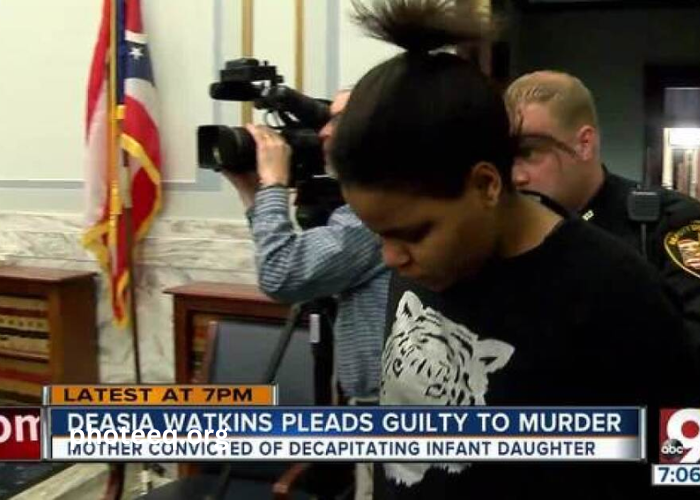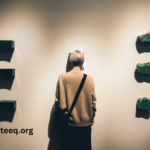The case of Deasia Watkins shook the nation when news broke of the horrific crime she committed. In 2015, Watkins, a 20-year-old mother, brutally murdered her 3-month-old daughter. The details of the crime were gruesome, and the investigation that followed was intense. As with any high-profile case, public interest surged, leading to a controversy surrounding the release of Deasia Watkins’ crime scene photos.
The Controversy Surrounding Deasia Watkins Crime Scene Photos
The release of crime scene photos is always a contentious issue, but in the case of Deasia Watkins, it took on a heightened level of controversy. The graphic nature of the crime, combined with the young age of the victim, made the photos particularly disturbing. Many argued that sharing these photos would only serve to sensationalize the crime and cause further trauma to the victim’s family and the community at large.
The Legal and Ethical Considerations of Sharing Crime Scene Photos
When it comes to sharing crime scene photos, there are legal and ethical considerations that must be taken into account. From a legal standpoint, the release of these photos can be restricted by privacy laws and regulations. In the case of Deasia Watkins, her defense attorneys argued that making the crime scene photos public would violate her right to a fair trial. The judge ultimately ruled in favor of releasing the photos but imposed restrictions on their dissemination to protect the privacy of the victim and her family.
Ethically, the decision to share crime scene photos is a complex one. On one hand, transparency is vital for maintaining public trust in the criminal justice system. On the other hand, the release of such graphic images can cause immense distress to the victim’s loved ones and potentially retraumatize them. Striking a balance between transparency and respect for the privacy and well-being of those affected by the crime is crucial.
The Impact of Crime Scene Photos on Victims’ Families
For the families of crime victims, the release of crime scene photos can be incredibly painful. These photos serve as a stark reminder of the trauma their loved ones endured and can reopen emotional wounds. In the case of Deasia Watkins, her family expressed their deep anguish at the potential release of the crime scene photos. They argued that it would only serve to further victimize them and impede their healing process.
The psychological impact of crime scene photos on victims’ families cannot be underestimated. The images can haunt them and make it difficult to move forward. It is crucial for law enforcement agencies and the media to consider the well-being of these families before making the decision to release such sensitive material.
The Role of Media in the Dissemination of Crime Scene Photos
The media plays a significant role in the dissemination of crime scene photos. In the case of Deasia Watkins, media outlets faced a difficult decision when it came to publishing these images. While there is a public interest in understanding the severity of the crime, the potential harm caused by sharing the photos must also be considered.
Responsible journalism requires careful consideration of the impact that publishing crime scene photos can have on the community and the victims’ families. It is essential for media organizations to exercise ethical judgment and prioritize the well-being of those affected by the crime.
How Crime Scene Photos Can Be Used as Evidence in Court
Crime scene photos are often admitted as evidence in court proceedings. They provide a visual representation of the crime scene and can help investigators and jurors understand the details of the crime. In the case of Deasia Watkins, the crime scene photos played a crucial role in establishing the nature and severity of the crime.
However, it is important to note that the use of crime scene photos as evidence must be balanced with the potential harm they may cause. This is especially true when the photos involve victims who are particularly vulnerable, such as infants or children. The court must weigh the probative value of the photos against the potential prejudice they may create.
The Responsibility of Law Enforcement Agencies in Handling Crime Scene Photos
Law enforcement agencies have a significant responsibility in handling crime scene photos. They must ensure that these images are treated with the utmost care and respect for the privacy of the victims and their families. In the case of Deasia Watkins, there were concerns about the potential mishandling or misuse of the crime scene photos.
Strict protocols and procedures must be in place to safeguard these sensitive materials. Law enforcement agencies should prioritize the protection of privacy while also recognizing the importance of transparency and accountability.
Conclusion
The controversy surrounding Deasia Watkins’ crime scene photos highlights the delicate balance that must be struck between the need for transparency and the respect for privacy. While transparency is crucial for maintaining public trust, it should not come at the expense of further traumatizing victims’ families.
Law enforcement agencies and the media must exercise ethical judgment when deciding whether to release crime scene photos. It is essential to consider the potential harm caused by disseminating these images, particularly when vulnerable victims are involved. By prioritizing the well-being of those affected by the crime, we can navigate these complex issues and ensure a more compassionate and responsible approach to handling crime scene photos.





